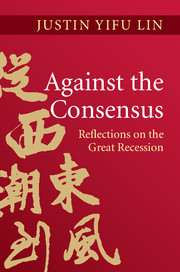Book contents
- Frontmatter
- Contents
- List of figures
- List of tables
- List of boxes
- Preface
- Overview
- Part I What Caused the 2008–9 Global Crisis?
- Part II A Win-Win Path to Recovery
- 6 Infrastructure investments – beyond Keynesianism
- 7 A massive global infrastructure initiative
- Part III How Poor Countries Can Catch Up: Flying Geese and Leading Dragons
- Part IV Toward a Brave New World Monetary System
- References
- Index
6 - Infrastructure investments – beyond Keynesianism
from Part II - A Win-Win Path to Recovery
Published online by Cambridge University Press: 05 June 2013
- Frontmatter
- Contents
- List of figures
- List of tables
- List of boxes
- Preface
- Overview
- Part I What Caused the 2008–9 Global Crisis?
- Part II A Win-Win Path to Recovery
- 6 Infrastructure investments – beyond Keynesianism
- 7 A massive global infrastructure initiative
- Part III How Poor Countries Can Catch Up: Flying Geese and Leading Dragons
- Part IV Toward a Brave New World Monetary System
- References
- Index
Summary
Investing in infrastructure is a win-win strategy for developed and developing countries alike – for today and tomorrow. Such investments can create space for structural reforms and help developed countries avoid a protracted “new normal” of low growth, high risks, and high debts, replacing it with a “new new normal” of a return to precrisis growth rates in developed countries and enhanced growth in developing countries.
Infrastructure investments in advanced economies: solid but limited options
More than three years after the start of the recent recession, manufacturing in the United States and Europe – with the exception of Germany – has not rebounded to precrisis levels. Unemployment remains high in the United States and is still rising in the Eurozone, straining national as well as household budgets. In the United States, unemployment assistance increased fourfold from 2007 to 2009, climbing from 0.24 percent of GDP to nearly 1 percent. In Spain, government spending on social benefits rose from 15.1 percent of GDP in 2008 to 18.1 percent in 2010. High unemployment rates have also been devastating household incomes in many countries, weakening demand and eroding the tax base. With tax revenues falling and social expenditures rising in the United States and Europe, governments responded to the crisis by recapitalizing failing financial institutions and stimulating demand. In the process, sovereign debt has reached levels that raise concerns about financial stability.
- Type
- Chapter
- Information
- Against the ConsensusReflections on the Great Recession, pp. 67 - 77Publisher: Cambridge University PressPrint publication year: 2013



